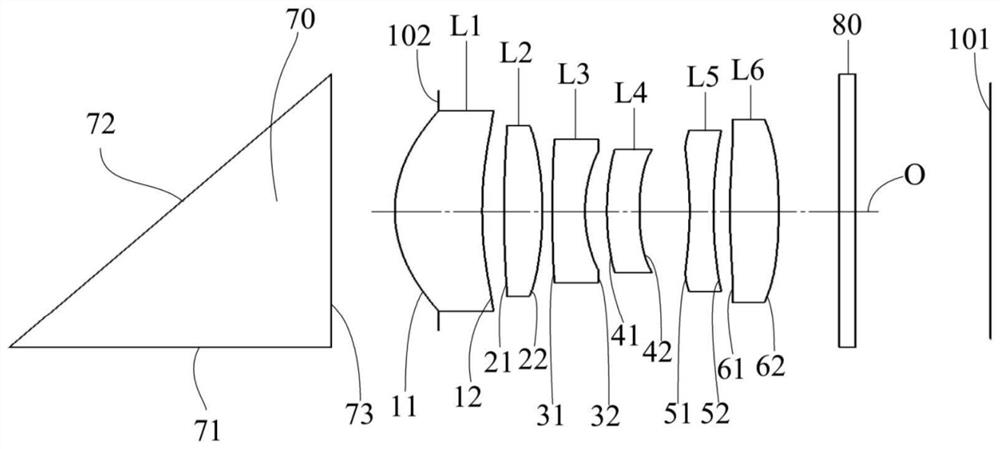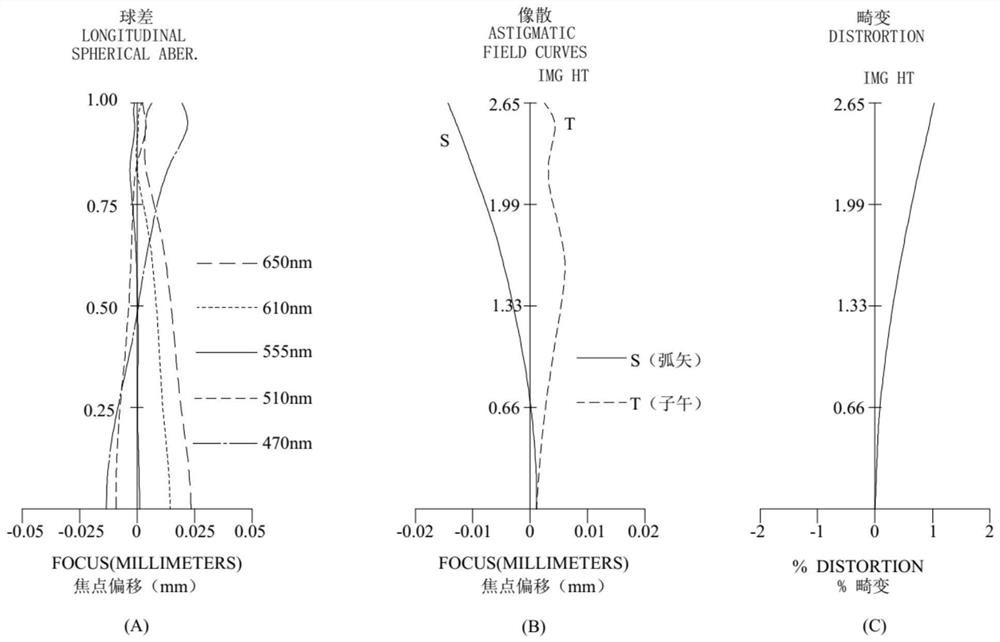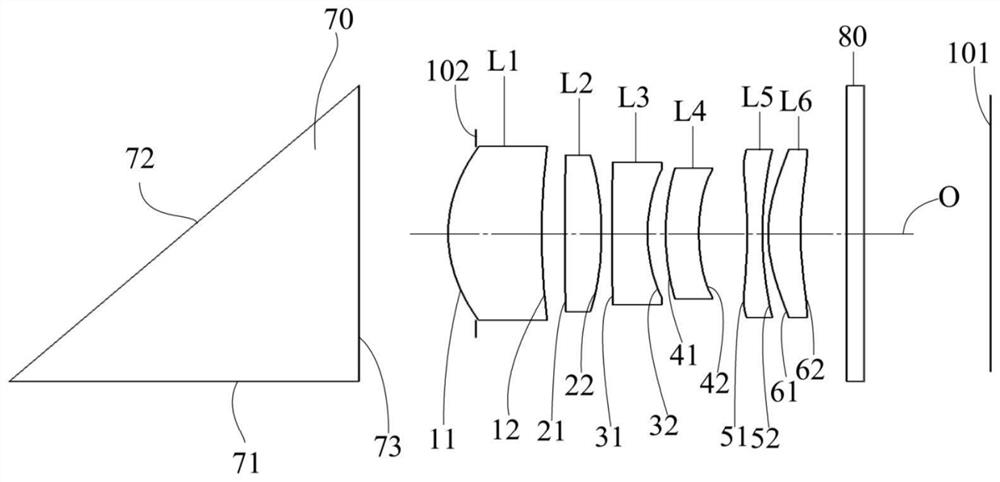Optical lens, camera module and electronic equipment
An optical lens and lens technology, applied in optics, optical components, instruments, etc., can solve problems such as the inability to achieve clear imaging of distant scenes, the large size limit of the camera module, and the inability of the camera module to achieve high-quality imaging. The effect of miniaturization, reduction of axial dimension, and mitigation of direction change
- Summary
- Abstract
- Description
- Claims
- Application Information
AI Technical Summary
Problems solved by technology
Method used
Image
Examples
no. 1 example
[0097] The structural diagram of the optical lens 100 disclosed in the first embodiment of the present application is as follows figure 1 As shown, the optical lens 100 is arranged in sequence from the object side to the image side along the optical axis O. L5, the sixth lens L6 and the infrared filter 80, wherein the rectangular prism 70 and the infrared filter 80 are made of glass, and the first lens L1 to the sixth lens L6 are made of plastic.
[0098] Further, the first lens L1 has a positive refractive power, the second lens L2 has a positive refractive power, the third lens L3 has a negative refractive power, the fourth lens L4 has a negative refractive power, the fifth lens L5 has a negative refractive power, and the sixth lens L3 has a negative refractive power. Lens L6 has positive refractive power. The object side 11 and image side 12 of the first lens L1 are respectively convex and concave at the optical axis O, and the object side 11 and image side 12 of the first...
no. 2 example
[0111] The structural diagram of the optical lens 100 disclosed in the second embodiment of the present application is as follows image 3 As shown, the optical lens 100 is arranged in sequence from the object side to the image side along the optical axis O. L5, the sixth lens L6 and the infrared filter 80, wherein the rectangular prism 70 and the infrared filter 80 are made of glass, and the first lens L1 to the sixth lens L6 are made of plastic.
[0112] Further, the first lens L1 has a positive refractive power, the second lens L2 has a positive refractive power, the third lens L3 has a negative refractive power, the fourth lens L4 has a negative refractive power, the fifth lens L5 has a negative refractive power, and the sixth lens L3 has a negative refractive power. Lens L6 has positive refractive power. The object side 11 and image side 12 of the first lens L1 are respectively convex and concave at the optical axis O, and the object side 11 and image side 12 of the firs...
no. 3 example
[0121] The structural diagram of the optical lens 100 disclosed in the third embodiment of the present application is as follows Figure 5 As shown, the optical lens 100 is arranged in sequence from the object side to the image side along the optical axis O. L5, the sixth lens L6 and the infrared filter 80, wherein the rectangular prism 70 and the infrared filter 80 are made of glass, and the first lens L1 to the sixth lens L6 are made of plastic.
[0122] Further, the first lens L1 has a positive refractive power, the second lens L2 has a positive refractive power, the third lens L3 has a negative refractive power, the fourth lens L4 has a negative refractive power, the fifth lens L5 has a negative refractive power, and the sixth lens L3 has a negative refractive power. Lens L6 has positive refractive power. The object side 11 and image side 12 of the first lens L1 are respectively convex and concave at the optical axis O, and the object side 11 and image side 12 of the firs...
PUM
 Login to View More
Login to View More Abstract
Description
Claims
Application Information
 Login to View More
Login to View More - R&D
- Intellectual Property
- Life Sciences
- Materials
- Tech Scout
- Unparalleled Data Quality
- Higher Quality Content
- 60% Fewer Hallucinations
Browse by: Latest US Patents, China's latest patents, Technical Efficacy Thesaurus, Application Domain, Technology Topic, Popular Technical Reports.
© 2025 PatSnap. All rights reserved.Legal|Privacy policy|Modern Slavery Act Transparency Statement|Sitemap|About US| Contact US: help@patsnap.com



